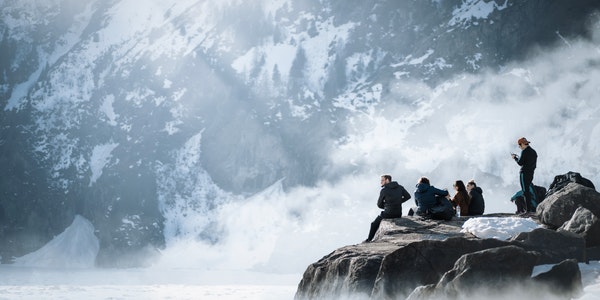Table of Contents
Montage and Film
Introduction
According to the content of the film and the psychological sequence of the audience, the montage shoots a film into many shots, and then combines them according to the original idea. In a nutshell: Montage is a means of connecting a group of divided shots. It can be seen from this that montage is a means of linking the shots taken by the camera in accordance with the logic of life, the sequence of reasoning, the author’s perspective and the aesthetic principles.
First, it is a means of using a camera, and then a means of using editing. Of course, film montage is mainly realized through the re-creation of directors, photographers and editors. The screenwriter of the film designs a blueprint for the future of the film, and the director of the film uses montage to recreate on the basis of this blueprint, and finally it is embodied by the photographer’s use of the film’s modeling expressiveness.
In the production of the film, the director shoots many shots according to the script or the theme of the film, and then organizes and edits these different shots organically and artistically according to the original creative conception to make them coherent. , Contrast, association, set off suspense and other connections and different rhythms, so as to selectively form a film that reflects a certain social life and thoughts and feelings and is understood and loved by a broad audience. These forms and methods of composition are called Montage.
Realization of Montage Technique
The basic element of the film is the lens, and the main method and means of connecting the lens is the montage, and it can be said that the montage is a unique means of expression of film art. Since the smallest unit of a film is a lens, what is the basic element of the film-lens? What does it have to do with montage?
We know that a lens is a piece of film shot from different angles, at different focal lengths, at different times, and processed differently. In fact, since the filming of the lens, the montage technique has been used. As far as the lens is concerned, shooting from different angles naturally has different artistic effects. For example, front shot, top shot, top shot, side shot, backlight, filter, etc., the effects are obviously different.
As far as the lens is taken with the same focal length, the effect is different. For example, long-range, panoramic, medium-range, close-up, close-up, close-up, etc., the effect is also different. Furthermore, the lens after different processing will also produce different artistic effects. In addition, due to the use of spaces, indents, and upgrades, it also brings a variety of different specific artistic effects. Besides, due to the different time taken during shooting, a long lens and a short lens are produced, and the length of the lens will also cause different effects.
At the same time, when connecting scenes and paragraphs, you can choose to use different connection methods, such as fade, reduce, draw, cut, circle, pinch, push, pull, etc. according to different ranges of changes, different rhythms and different emotional needs. . All in all, what kind of lens is taken, what kind of lens is arranged together, and what method is used to connect the arranged lenses, and the methods and means used by filmmakers to solve this series of problems are montages.

If the picture and sound are the “words” for the film director to communicate with the audience, then the montage method used to combine the pictures and sound into the lens and the combination of the lens to form the film is the director’s “grammar”. For a film director, mastering these basic principles does not mean mastering “grammar”.
Montage often presents a variety of features in the specific content and aesthetic pursuits of each film. Montage is from point to point for the audience. For the director, montage first goes from combining to dividing, that is, dividing, and then from dividing to combining, that is, combining. The smallest unit of splitting is the shot, so the director should write a sub-shot script.
As an audience, how should we appreciate the director’s art from the perspective of montage? After all, montage is a method used by directors to tell stories. People who listen to it always hope that the story is smooth, vivid, infectious, and can mobilize the audience’s associations and arouse the audience’s interest. These requirements are completely applicable to montage. The audience is not only satisfied with clarifying the plot outline, or generally comprehending the thoughts and ideas of the film, but also requires a clear and smooth perception of every link and detail of the film’s narrative process. The montage of a film should first be understood by the audience.
A contemporary feature film generally consists of about 500 to 1,000 shots. The scene, angle, length, form of movement, and the way the picture and sound are combined for each lens all contain the element of montage. It can be said that montage has been used since the beginning of the lens. At the same time, in the processing of the angle, focal length, and length of the lens, the will, emotion, praise, and ingenuity of the filmmaker are already included.
In the arrangement, combination and connection between the lenses, the subjective intentions of the photographers are more clearly reflected. Because each lens does not exist in isolation, it must have a relationship with the upper and lower lenses connected to it, and different relationships produce different artistic effects such as coherence, jumping, strengthening, weakening, alignment, and contrast.
In addition, the assembly of the shots not only plays a role in vividly narrating the content of the shots, but also creates new meanings that each isolated shot itself may not be able to express. Griffith’s first attempt to use montage for performance in film history was the experiment of combining a shot of a man who should be on a desert island with a close-up of the face of a wife waiting at home. After this ” “Assembling”, the audience feels “waiting” and “sorrowful”, and a new and special imagination is produced. Another example is to arrange a group of short shots together and connect them by a quick cut method. The artistic effect is that the same group of shots are arranged together and connected by the method of “fading” or “transforming”, which is quite different.
For example
Connect the following three lenses A, B, and C in a different order, and different contents and meanings will appear.
- A person is laughing, B. Pointing a pistol, C. The same person has a look of horror on his face.
What impression do these three close-ups give to the audience?
If you use the A-B-C sequence to connect, it will make the audience feel that the person is a coward and a coward.
However, the lens remains the same, as long as we change the sequence of the above lens, we will come to the opposite conclusion.
- A look of horror appeared on a person’s face, B. Pointing a pistol, A. The same person was laughing.
Connected in the order of C-B-A in this way, the person’s face showed a look of horror, because a pistol was pointed at him. However, when he thought about it, he felt that there was nothing great, so he smiled-smiled in front of the god of death. Therefore, he gave the audience the impression of a brave man.
In this way, changing the order of shots in a scene without changing each shot itself completely changes the meaning of a scene, draws the opposite conclusion, and obtains completely different effects.
This coherent organization and arrangement is the use of the unique montage method of film art, which is the structure of the film we are talking about. From the above example, we can see the importance of this arrangement and combination structure, which is an important means of organizing materials together to express the idea of the film. Simultaneously. Due to the different permutations and combinations, different artistic effects such as positive and negative, deep and shallow, strong and weak are produced.
The effect of montage
The Soviet film master Eisenstein believes that the A lens plus the B lens is not a simple synthesis of the two lenses A and B, but will become a brand-new content and concept of the C lens. He clearly pointed out: “The alignment of the two montage shots is not the sum of two numbers, but more like the product of two numbers-this fact, which was correct before, still appears to be correct today. The reason why it is more like The product of two numbers, rather than the sum of two numbers, is that the result of the arrangement is qualitatively (if you are willing to use mathematical terms, it is in the’dimensional’) that is always different from the individual components. Let us give another example The woman-this is a picture, the mourning dress on the woman-this is also a picture, both pictures can be expressed in real objects. And the “widow” produced by the opposition of these two pictures , It is no longer something that can be expressed with real objects, but a new appearance, a new concept, and a new image.”
The use of montage techniques can give new meaning to the connection of shots, which greatly enriches the expressive power of film art, thereby enhancing the appeal of film art. Regarding this issue, we can also get great inspiration from a phenomenon in physics: as we all know, carbon and diamond are the same in terms of their molecular composition. But one is surprisingly crisp, the other is extremely hard, why? The results of the scientists’ research proved that it is caused by the different molecular arrangement (lattice structure). This means that the same material, due to different arrangements, can produce such diametrically opposite results, which is really thought-provoking.
The Hungarian film theorist Bella Balaz also pointed out: “Once the last shot is connected, the unusually rich meanings that were originally hidden in each shot are emitted like electric sparks.” It can be seen that this kind of “electric spark” looks like an electric spark. The meaning of “potential” in a single lens is undetected by people. It must be “assembled” to allow people to produce a new and special imagination. The montage we are talking about firstly refers to the combination relationship between the lens and the lens, as well as the combination relationship between time and space, sound and picture, picture and color. As well as the meaning and effect of these connection relationships.
“Montage is the connection method of the film. The whole film has a structure, and each chapter, each large section, and each short section must also have a structure. In the film, this method of connection is called montage. In fact, it means One by one shots are formed into a segment, and then the small segments are formed into a large segment, and the large segments are organized into a movie. There is no mystery, no tricks, and it is in line with rational and perceptual logic. , In line with the logic of life and vision, looks smooth, reasonable, rhythmic, and comfortable. This is clever montage. On the contrary, it is not clever montage.” There is no such a profound, simple and easy-to-understand explanation of montage. Elaborated.
Function and classification of montage technique
Montage has two major functions: narrative and ideographic. According to this, we can divide montage into three basic types: narrative montage, performance montage, and rational montage. The first is narrative means, and the latter two are mainly used to express meaning. On this basis, a second-level division can be made, as follows: Narrative montage (parallel montage, cross montage, repeat montage, continuous montage), performance montage (lyrical montage, psychological montage, metaphor montage, contrast montage), rational montage ( Juggling montage, reflection montage, thought montage).
Narrative
Narrative montage was first used by American film master Griffith, and it is the most commonly used narrative method in film and television. There is no concept of film montage in this fashion. It is still an unconscious behavior. Its characteristic is to explain the plot and show the event as the main purpose. According to the time flow of the plot development, the causal relationship divides and combines the shots, scenes and paragraphs to guide The audience understands the plot. This kind of montage grouping is clear, logically coherent and easy to understand. Narrative montage includes the following specific techniques:
(To Be Continued)
